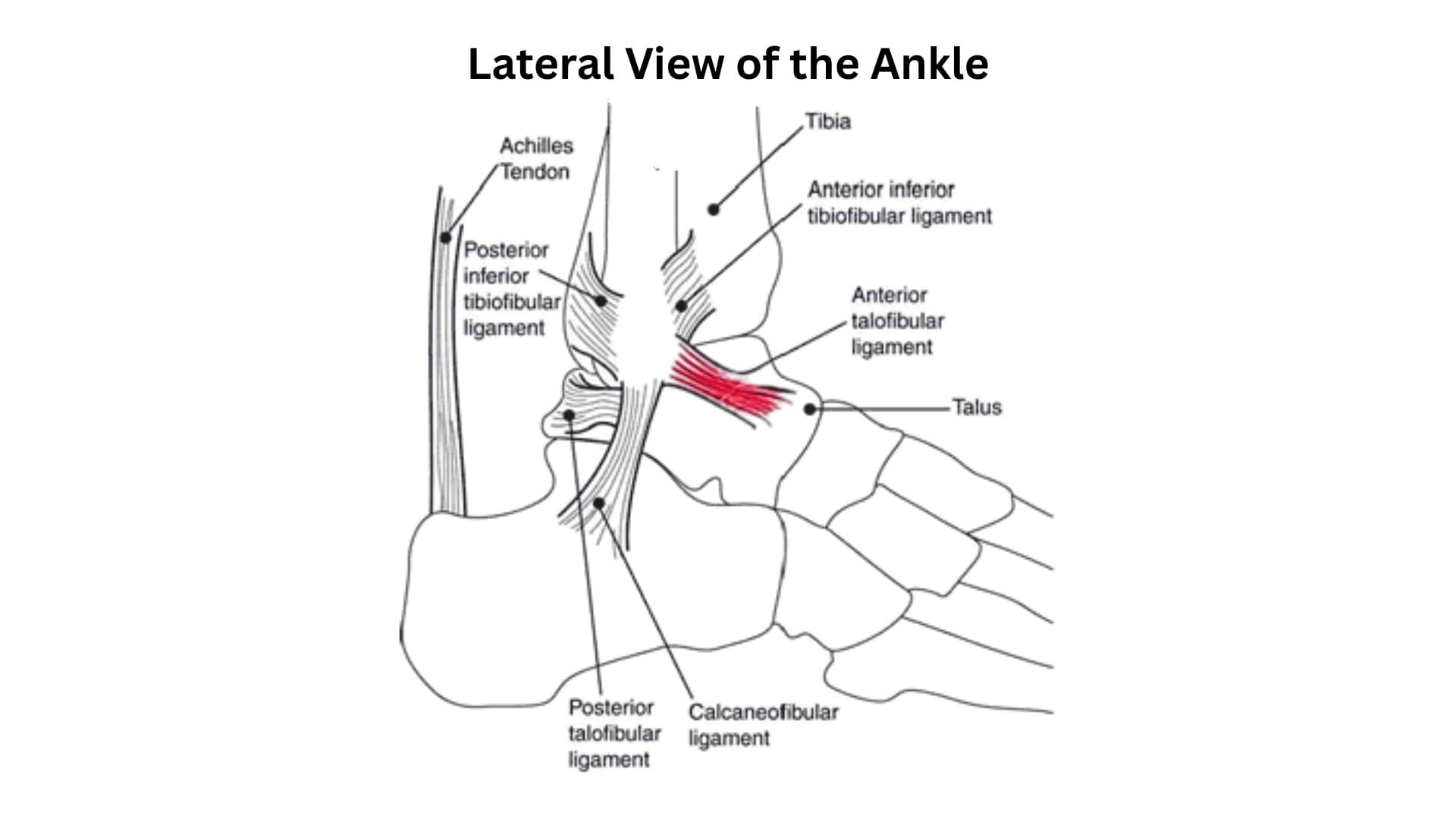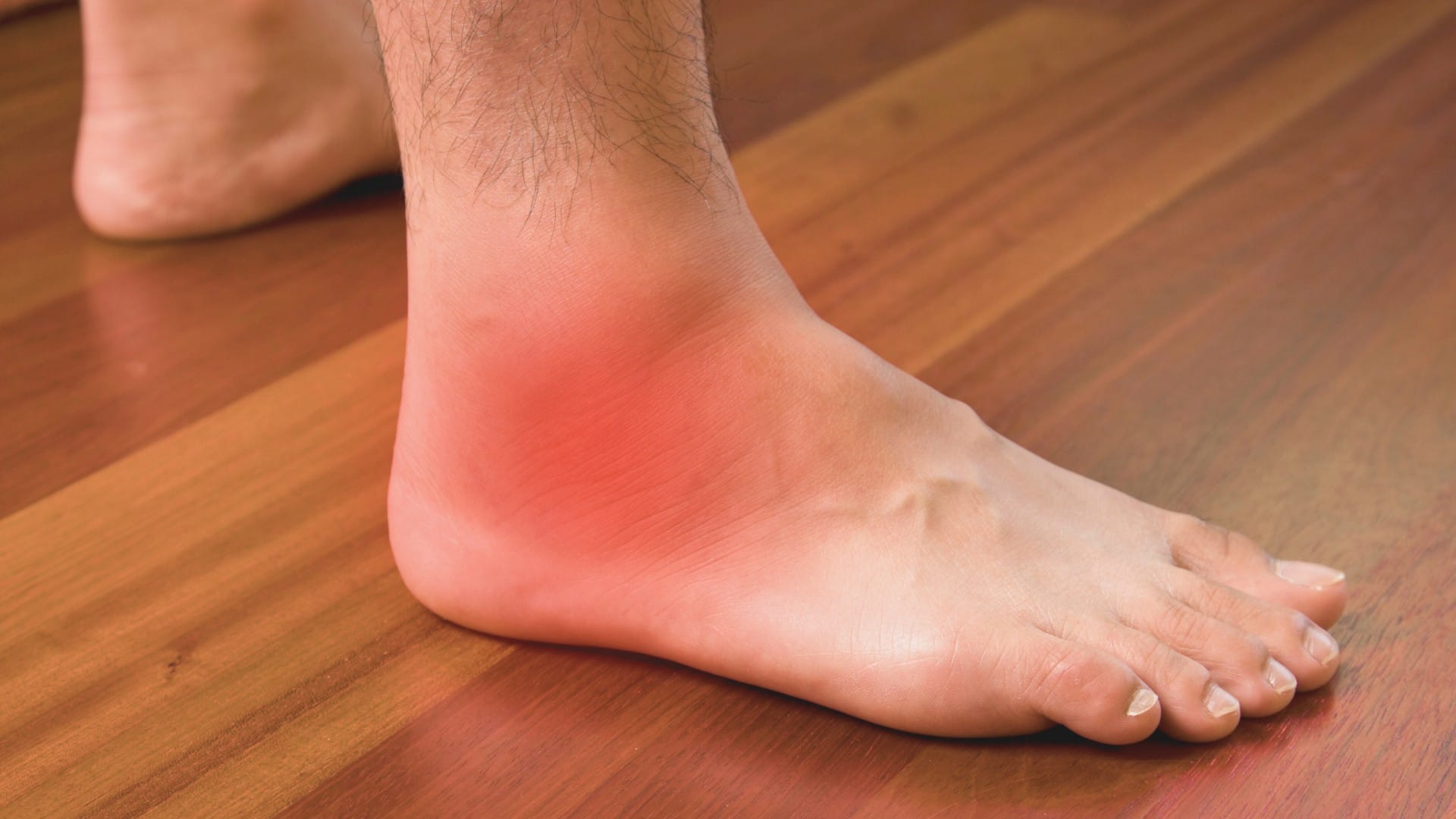Ankle sprain is the most common musculoskeletal injury, and the anterior talofibular ligament is the most commonly affected. The anterior talofibular ligament (ATFL) is a small ligament, but it does a lot to keep your ankle stable. The injury can occur due to inversion of your ankle with or without plantar flexion.
ANF Therapy®, also known as Amino Neuro Frequency Therapy, is a frequency-based approach that utilizes wearable devices, ANF Devices, which are applied directly to the skin. These devices are configured with bio-coded frequencies, aiming to support the natural healing mechanisms and promote physiological balance.
In this blog, you will learn about what anterior talofibular ligament injury is, its causes, and how ANF Therapy® can help.
What Is the ATFL?
The ATFL is a small but crucial ligament situated on the outside of the ankle. It is part of a group of three ligaments (the lateral collateral complex) that maintain the ankle’s stability. It is one of the most commonly injured ligaments. This ligament connects the lateral malleolus, a bony bump on the outside of your ankle, to a bone in your foot called the talus. It lies almost flat across your ankle and points a little forward.
Studies show sprains account for 16-40% of all sports injuries, and in almost 70% of those cases, it is your ATFL that takes the damage.

What Does the ATFL Do?
The ATFL keeps the talus bone in your ankle from moving too far forward when your foot points downward. The ATFL also prevents your ankle from rolling inward when your foot is in that same pointed-down position. This helps stop the kind of twisting movement that often causes sprains. Without it, your ankle will feel loose, unstable, and much more likely to give way.
How Do ATFL Injuries Happen?
An ATFL injury usually happens when too much of your weight shifts onto the outside of your foot while you are standing or moving. In that moment, your ankle can roll inward, stretching the ligament past its limit. That sudden twist is what causes the sprain. Many everyday situations and sports movements can cause this:
- Landing awkwardly after a jump
- Stepping on another player’s foot during a game
- Running on rough or uneven ground
- Changing direction quickly while running
- Being pushed or hit in a way that forces your ankle to twist
What Are the Signs of an ATFL Tear?
Doctors classify ATFL injuries into three grades based on the extent of ligament damage. Each grade comes with different symptoms and levels of difficulty when moving your ankle.
| Grade | Symptoms |
Grade 1 (Mild sprain) |
|
| Grade 2 (Moderate sprain) |
|
| Grade 3 (Severe sprain) |
|

Why the ATFL Matters for Long-Term Ankle Health
If the ATFL ligament is injured and not properly treated, the ankle may remain weak for years. Research indicates that up to 40% of ankle sprains can develop into chronic ankle instability if proper care and rehabilitation are not received. This means your ankle keeps “giving way” even during simple activities like walking on uneven ground or climbing stairs.
Repeated ankle sprains
A damaged ATFL makes your ankle more likely to twist again. Each new sprain stretches the ligament further, creating a cycle of repeated injuries and delayed healing.
Ongoing ankle weakness
When the ATFL cannot hold the ankle bones in place, the joint feels loose or unstable. Over time, the surrounding muscles may also weaken, which exacerbates the instability.
Coordination problems
The ATFL also contributes to proprioception, the process by which your brain determines the position of your ankle. When it is injured, this feedback is disrupted, making you more likely to stumble or trip.
Early ankle arthritis
An unstable ankle puts extra strain on the joint cartilage, which can lead to the development of arthritis. As a result, you may experience pain, swelling, stiffness, and difficulty staying active.
How to Reduce the Risk of an Acute Ankle Injury
While not all ankle injuries can be avoided, there are simple steps you can take to protect your ankles and lower your risk of injury to your talofibular ligament.
Muscle strength
Stronger muscles around your ankle and calf give the joint better support. Stretching also keeps the ankle flexible and reduces the likelihood of strain.
Balance training
Balance exercises such as standing on one leg, walking in a straight line, or practicing on a wobble board can help improve your ankle control. This reduces the risk of acute ankle sprain.
External support
If you have had ankle injuries before, an ankle brace or athletic tape can give extra protection during activity.
Gradual progress
Always warm up before exercise. Increase your training intensity gradually to avoid sudden overload on your ankle.
Safety
Be cautious on uneven or slippery surfaces. Clearing clutter and wearing the right shoes, both indoors and outdoors, can reduce the risk of accidents.
How does ANF Therapy® help with an Anterior talofibular ligament sprain?
ANF Therapy® or Amino Neuro Frequency Therapy is a frequency-based approach that is applied by trained healthcare professionals to aid in the treatment, prevention, and relief of musculoskeletal injuries, as well as related issues such as pain, swelling, discomfort, and limited mobility. It is also designed for use in physical rehabilitation, neuromusculoskeletal care, and supportive treatment settings.
Outcomes:
ANF Therapy® is a non-invasive, chemical-free method. It uses small carbonised metal devices that are applied to the skin. In a real-world study involving 1,054 patients across 45 countries, pain levels decreased significantly, from 7.6 to 3.1 out of 10 with ANF Therapy®. Common pain areas included the lower back, knee, neck, and shoulder. Patients also showed reduced swelling and improved range of motion. Satisfaction was high (92/100), and side effects, such as dry mouth, headache, and fatigue, were mild and short-term, reported by 42% of patients. The results are promising, but should be interpreted with caution.




